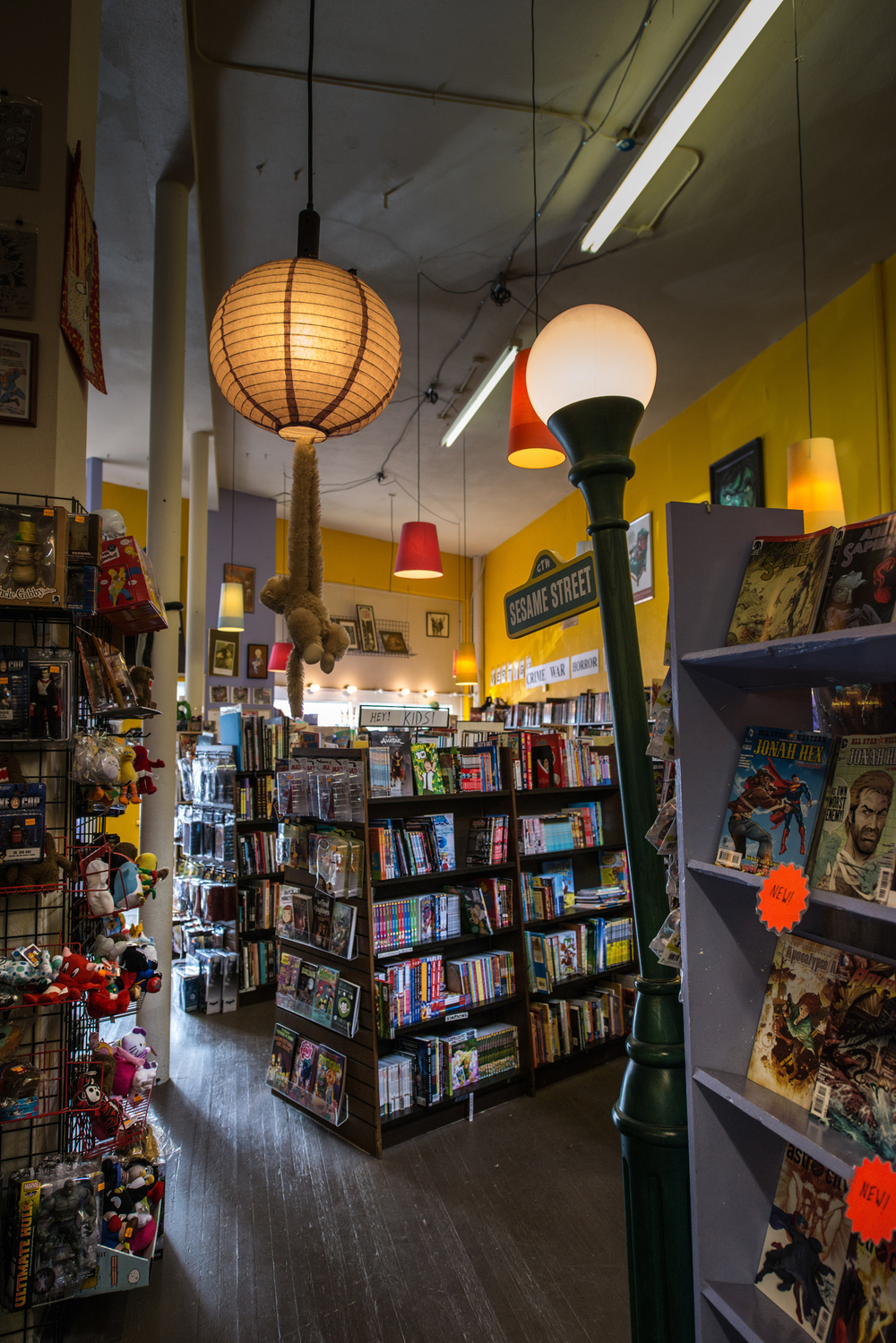Portland is a great town for readers, so it’s hard to know if the trends in book sales here follow those for the rest of the country. Many who study the trends claim that the future of the publishing and bookselling worlds is grim, but you only need to look past the doors of Cosmic Monkey Comics to see that these premonitions of doom are overkill.
For those of you who haven’t visited the shop (and I definitely suggest you do), let me set the scene: the space is large—much larger than most other comic book shops you might have visited. Once you’re through the dark, unassuming doors, you find yourself surrounded by tall shelves filled to overflowing with all kinds of graphic novels and illustrated books. There are sections for every reader: rows of comic books for young adults, rows of children’s comics, and a separate row featuring only international faire. One corner is solely devoted to local zines and independent comics. This is all before you get to the recently printed bimonthly books and back issues that take up the rear of the shop.
What really makes this shop unique is the attention it gives to all of the great work being produced by individuals and small presses—both here and abroad—in addition to mainstream publishers. This gives those in charge at Cosmic Monkey a particularly nuanced viewpoint on changes happening across the publishing (and bookselling) landscape.
The shop has been going strong for ten-plus years, helmed by Andy Johnson (who goes by the title of “Comic Czar”) and Adam Healy (the “Comic Soothsayer”), and is one of the most popular dens of all things geeky in the Portland Metro area. I recently joined them for a brief discussion about some of the changes taking place in the publishing world. First I asked them if the growth in digital marketing for comics by companies like comiXology has had a negative effect on readership of printed books. Their response? “Not really.” Adam went on to explain that although they are aware of the changes happening in digital distribution, the effect on their bottom line has been minimal. In fact, both Adam and Andy agreed that purchases on ereaders are building interest and increasing readership.There has been a shift in the content being created, Adam remarked: publishers are starting to produce more entertaining and diverse general content, and paying more attention to the new readers. Instead of focusing on old, serialized content, publishers are reaching out to new audiences—some of which were turned on to comics through digital purchases.
Andy mentioned that Image Comics has been taking advantage of this new model by promoting their creator-owned titles, which often feature new and innovative storylines. One of these new titles, Rat Queens, has garnered a lot of attention recently and has even been optioned for a television show. This push for originality carries over to children’s books as well, such as those produced by publishers like Archaia and Top Shelf.
Adam noted the number of parents bringing their kids to Cosmic Monkey for events and weekend trips. “Parents are looking for a place to bring their kids that they feel good about sharing with them,” he said, and I can definitely see how that is true. There is a cross-pollination going on between popular media and comics these days, and parents are taking advantage of that by introducing their children to reading comics and visiting the shops. This is how the culture of comics grows, and that is where the lessons for struggling book retailers come in. When we discussed what bookstores could learn from comic shops, it was the building of culture that we all came to agreement on. Comic shops hold events, invitationals, and annual draws like Free Comic Book Day, which in turn welcomes new customers to the culture of comics. By building and nurturing this culture, comic shops ensure their relevance in popular culture. “It’s something I’ve noticed places like Green Bean Books [are] doing as well,” Adam said.
Getting accurate sales data for comic shops has been notoriously difficult. Most companies hold on to their proprietary data, as does the major comics distributor, Diamond, so getting a good idea of how comic book and graphic sales info compares to current book retailer data is problematic. Sites like Comichron are helpful, but really all you need to do is stop by a shop like Cosmic Monkey on a Saturday and see what the numbers can’t tell you.

